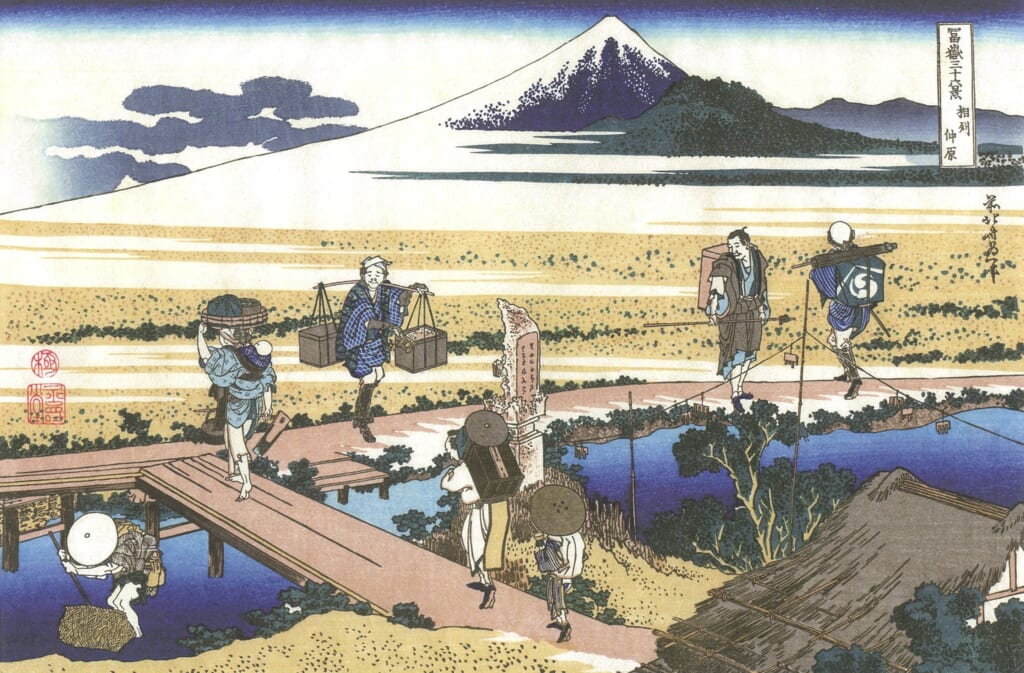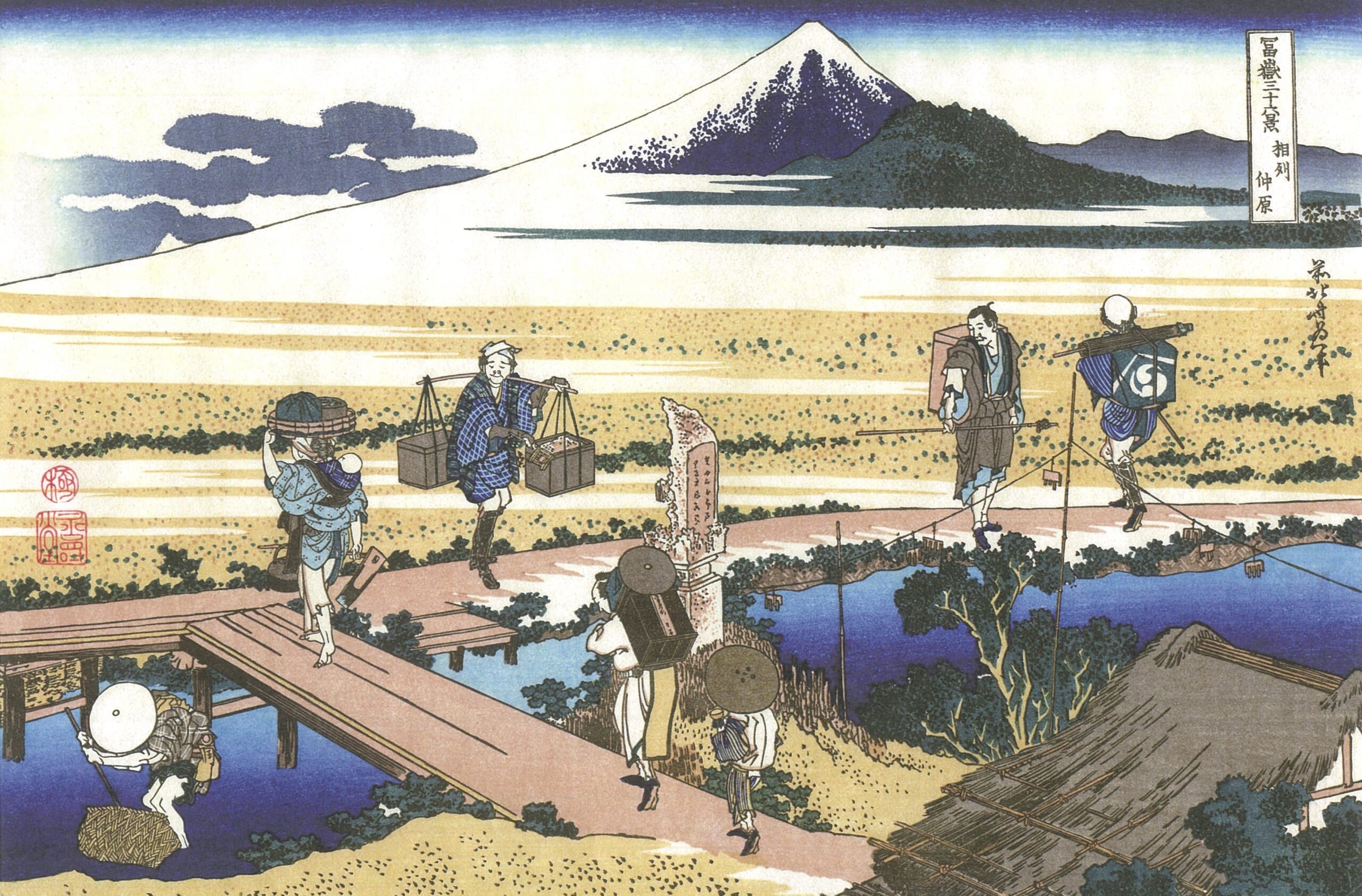Katsushika Hokusai’s Ukiyo-e I will explain Nakahara in Sagami Province in Thirty-six Views of Mount Fuji.
Nakahara in this ukiyo-e is Nakahara-juku, which was in the middle of the Sagami Plain in present-day Hiratsuka City. .
Nakahara-juku is where the Nakahara-dori leading to Edo and the Daisen-do used for pilgrimages to Mt. Daisen intersect.
From 1595 to 1657, Tokugawa Ieyasu used the Nakahara Palace for falconry and for traveling between Sunpu and Edo.
The plain spreads out in front of you, and you can see the majestic view of Mt. Fuji.
Daisen is in front of Mt.Fuji.
At the time of ukiyo-e, there were many people coming and going on the pilgrimage to Mt. Oyama, which was a sacred place for syncretism of Shinto and Buddhism.
A stone statue of Fudo Myoo, the principal image of Daisenji, is enshrined along the road.
A peddler who expects manpower.
Ascetic practitioners and those who carry a shrine with a Buddha statue on their backs and beg to dedicate the Lotus Sutra that they have copied.
A farmer going to work in the fields.
A man silently scooping a net in a stream.
Many people are depicted.
The stream where the man scoops the net is thought to be the Shibuta River (commonly known as the Tamagawa River) that flows north of Nakaharakamijuku, the Otokogawa River.
The luggage of the man on the far right bears the crest of Nishimuraya, the publisher of ukiyo-e.
This ukiyo-e is from around 1830 to 1832. Hokusai is around 72 years old.



